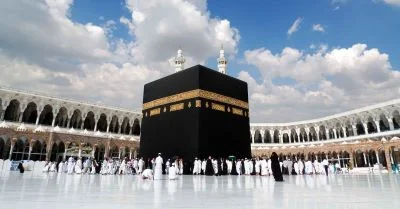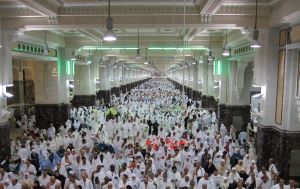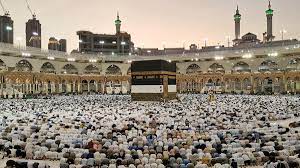‘Umrah
‘Umrah is an obligatory act.
The importance of ‘umrah in relation to Hajj.
The differences between Hajj and ‘umrah.
- ‘Umrah is an obligatory act. Both Hajj and Umrah are duties to be performed at least once in the life of a Muslim, as indicated by The Prophet’s ﷺ words:
“The performance of Hajj once (in life) is a duty and if one does it more than once it is a voluntary act.
It must be stressed that a Muslim can only undertake this spiritual journey if he has the means to do so. However, according to the Sunnah, it is better to perform Hajj and ‘Umrah often.
قال رسول الله ﷺ العمرة إلى العمرة كفارة لما بينهما والحج المبرور ليس له جزاء إلا الجنة” (رواه البخاري ومسلم)
The Prophet ﷺ said: “Umrah to ‘Umrah is an expiation for whatever was between them (of sins) and there is no reward for Hajj Mabroor other than Paradise [Al-Bukhaari]
- The Sharee’ah encourages these two great acts of worship and motivates all Muslims to perform both. ‘Umrah have many conditions, manners, obligations and rulings. ‘Umrah is an obligatory act. The fact that Muslims are instructed to perform ‘Umrah shows the importance of this act of worship. ‘Umrah has three pillars when performing ‘Umrah, the Muslim has to don the Ihraam, perform Tawaaf and Sa’y. If a person performs ‘Umrah he says:
“I am here at your service Allah,
I am here for performing ‘Umrah.
لبيك اللهم عُمْرَة
- The first pillar of ‘Umrah is ihraam. The rules and manners of ihraam are the same for ‘Umrah and Hajj. There are no distinct differences in ‘Umrah and Hajj when we look at the tawaaf and the sa’y. Allah has made these pillars consistent and universally accepted.
How to perform ‘Umrah:
- The Muslim who intends to perform the ‘Umrah must cleanse himself completely of all impurities and remove the pubic hairs, as well as the hairs under the armpits.
- He/she also enters into the state of ihraam before reaching the Meeqaat. He/she makes intention to perform ‘Umrah by saying:
“I am here at your service Allah, I am here for performing “Umrah.” - The pilgrim recites talbiyyah until he/she reaches Makkah.
- The pilgrim enters through any gate he chooses.
- He/she then proceeds to perform the tawaaf.
- After completing the seven rounds of the tawaaf, the pilgrim completes all prayers and supplications before moving in the direction of As-Safaa.
- He/she then repeats the statement of Allah
“Indeed As-Safaa and al-morwa are among the symbols of Allah. So whoever makes Hajj (pilgrimage) to the house or performs ‘Umrah-there is no balme upon him for walking between then and whoever volunteers good-them indeed Allah is Appreative and knowing.” (soorat al-baqarah: 158) - The sa’y is completed in the same manner for both Hajj and ‘Umrah.
- When he has completed say, he gets a haircut and comes out of the state of ihraam.
- At this point the ‘Umrah of the Muslim is complete.
- It is not Sunnah to perform ‘Umrah too frequently (every second day for example). We can learn from the examples of the Companions such as Ibn Abbaas and Ibn ‘Umar
They completed ‘Umrah every time their hair grew back (every two months). The Muslim performs Tawaaf-ul-Wadaa when he/she is ready to return to his/her family (home) after completion of the ‘Umrah. He performs it preferably during the last hour before his departure so that he does not occupy himself with anything else after the tawaaf.
The Prophet said: “None of you should leave until the last of his acts is at the House (Ka’bah) [Muslim]
What we learn from the lesson:
- ‘Umrah is an obligatory Sunnah.
- ‘Umrah must be performed at least once in a Muslim’s lifetime.
- ‘Umrah has three pillars: ihraam, tawaaf, and say.
- After completing sa’y, the pilgrim comes out of ihraam.
- At this point the ‘Umrah is complete.
- The Muslim performs Tawaaf-ul-Wadaa’ and returns home.








